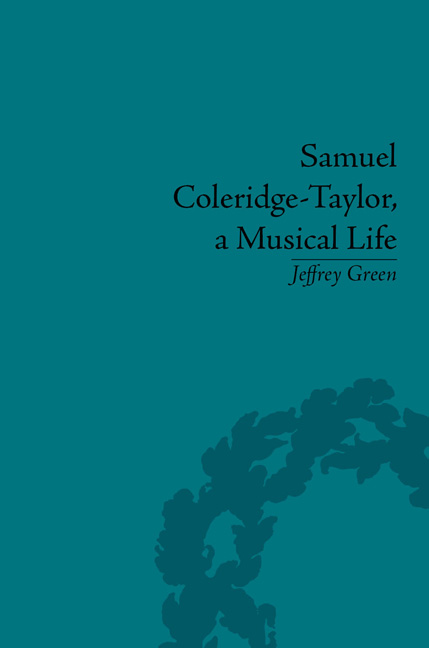Book contents
- Frontmatter
- CONTENTS
- Dedication
- Acknowledgements
- List of Figures
- Introduction
- 1 The Early Years
- 2 The Royal College of Music
- 3 The Promising Young Composer
- 4 The Wedding Feast
- 5 ‘A Sentiment Prevalent Here’
- 6 Intensifying the Effect
- 7 The International Star
- 8 A Stalwart Member of the Profession
- 9 A ‘Definite Place for the Negro in the World's History’
- 10 A Tale of Old Japan
- 11 Requiem
- 12 The Legacy
- Postscript
- Appendix 1 The Song of Hiawatha
- Appendix 2 Further Reading
- Notes
- Works Cited
- Index
4 - The Wedding Feast
- Frontmatter
- CONTENTS
- Dedication
- Acknowledgements
- List of Figures
- Introduction
- 1 The Early Years
- 2 The Royal College of Music
- 3 The Promising Young Composer
- 4 The Wedding Feast
- 5 ‘A Sentiment Prevalent Here’
- 6 Intensifying the Effect
- 7 The International Star
- 8 A Stalwart Member of the Profession
- 9 A ‘Definite Place for the Negro in the World's History’
- 10 A Tale of Old Japan
- 11 Requiem
- 12 The Legacy
- Postscript
- Appendix 1 The Song of Hiawatha
- Appendix 2 Further Reading
- Notes
- Works Cited
- Index
Summary
Coleridge-Taylor's Four Characteristic Waltzes were advertised in September's Musical Times in versions for solo piano, for violin and piano, string parts (small and large orchestra), for wind (both sizes of orchestra) and for military band. This with Coleridge-Taylor's festival success confirmed that he was a composer to be watched. Some London critics knew the opinions of Jaeger, Parry, Sullivan and Stanford on this quiet dark-skinned young man. And there were reviews such as that in the Musical Times back in June 1898:
It is very rare to find such marked individuality in conception and treatment in so young a composer, and pianists and violinists in search of fresh and original music may be warmly recommended these waltzes. They were originally designed for orchestra, but they are very effective as pianoforte pieces, and still more so when the assistance of a violin is secured.
The review ended: ‘the parlour pathos of the conventional waltz is consumed by a virile spirit that converts its usual monotonous beat into heart-throbs’. Organist Frederick Edwards who edited the Musical Times had old-fashioned views hence Jaeger's comment to Thompson in 1901 that it was ‘funny’ that Edwards ruled ‘over the destinies of musical young England’. ‘One of Mr. Taylor's latest works’, noted September's Musical Times, ‘is a setting of Longfellow's “Hiawatha's Wedding-Feast” for tenor solo, chorus, and orchestra, a fine specimen of his characteristic freshness which distinctly merits the attention of choral societies’.
- Type
- Chapter
- Information
- Samuel Coleridge-TaylorA Musical Life, pp. 63 - 84Publisher: Pickering & ChattoFirst published in: 2014



